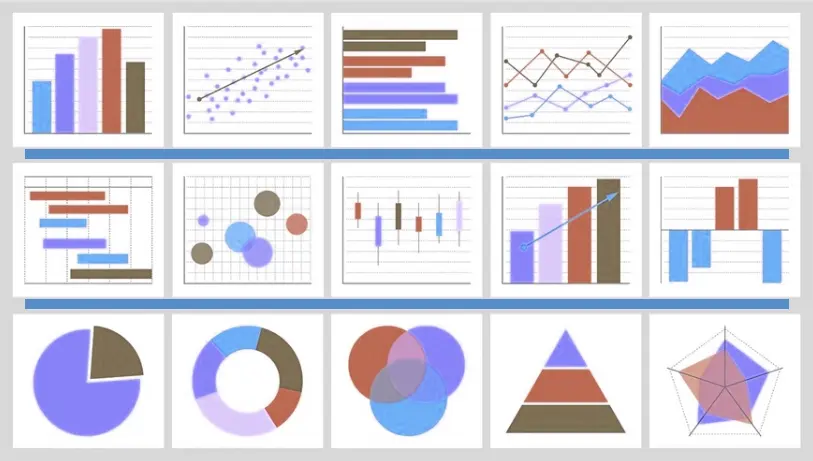
Big Data Analytics enables organizations to transform massive amounts of information into actionable insights. According to McKinsey, companies that effectively leverage analytics are 23 times more likely to acquire customers, 6 times more likely to retain them, and 19 times more profitable than their competitors. With the global datasphere projected to reach 163 zettabytes.
by 2025, businesses that fail to adopt comprehensive Big Data Analytics solutions risk falling behind.
However, implementing effective big data analytics methods isn't without challenges. Poor data quality costs businesses an average of $12.9 million annually due to inefficiencies and errors. Throughout this guide, we'll explore the various applications of big data analytics across industries including finance, healthcare, marketing, and logistics. Furthermore, we'll examine how the data analytics transformation is revolutionizing business operations through real-time monitoring, predictive modeling, and AI integration that enables professionals to extract deeper insights while automating complex processes.

In today's digital ecosystem, data has evolved far beyond simple spreadsheets and databases. The expanding datasphere generates an estimated 2.5 quintillion bytes of data each day, with projections showing 40 zettabytes of data will exist by 2025. This exponential growth has fundamentally altered how we store, process, and extract value from information.
Regular data analysis deals with smaller organized data sets measured in gigabytes or terabytes. It uses standard tools like spreadsheets and SQL. Big data however, works on a much larger scale and is more complex. Big data needs a spread-out system instead of one central system. Unlike regular data with set structures big data uses flexible structures that apply when someone accesses the raw messy data. New types of databases like MongoDB and Cassandra are great at handling this messy information that doesn't fit into rows and columns. Also big data analysis happens right away or almost right away giving quick insights instead of looking back at old data. This allows companies to react to new patterns and chances.
The foundation of big data rests on three key characteristics:
Organizations leveraging big data analytics gain significant competitive advantages. Companies proficient in analytics are twice as likely to be in the top quartile of financial performance within their industries, three times more likely to execute decisions as intended, and five times more likely to make decisions faster.
Big data analytics substantially improves operational efficiency, with organizations reporting an average 8% increase in revenues and a 10% reduction in costs. The enhanced decision-making capabilities enable businesses to uncover hidden patterns, optimize processes, and predict future trends with unprecedented accuracy.
Essentially, big data analytics enables smarter business moves by identifying new opportunities, streamlining operations, and enhancing customer experiences. The ability to process information almost immediately—as opposed to the slower, traditional approaches—gives companies the agility needed to thrive in today's fast-paced markets.
Modern businesses have moved beyond gut feelings to embrace data-driven decision making. In this new landscape, Big Data analytics has become the linchpin of successful strategy development and execution.
Companies gain unprecedented insights into consumer behavior through advanced analytics. Netflix collects viewing preferences and habits from over 150 million subscribers to present tailored content recommendations. Similarly, Amazon analyzes browsing history and purchase patterns to create personalized shopping experiences that boost sales. Through these customer insights, businesses can develop targeted marketing campaigns that resonate with individual preferences, consequently increasing engagement and loyalty.
Real-time analytics transforms operational efficiency by monitoring processes instantaneously. Organizations identify bottlenecks and inefficiencies through analysis of structured and unstructured data. For instance, logistics companies leverage Big Data to optimize routes, shorten delivery times, and improve inventory management based on real-time weather, traffic, and demand data. Above all, this real-time capability enables businesses to allocate resources with surgical precision, cutting costs by an average of 10% while increasing revenues by 8%.
Predictive analytics empowers businesses to anticipate future outcomes through historical data analysis. Classification models categorize customers into segments for targeted marketing, meanwhile clustering models group similar customers to develop specialized strategies. Time series models forecast demand patterns, helping companies like call centers predict hourly service requirements. These machine learning algorithms continuously learn from data patterns, significantly reducing human error while increasing efficiency.
Big Data analytics excels at identifying unusual patterns that signal potential problems. Financial institutions utilize anomaly detection to flag fraudulent activities by analyzing transaction trends. In fact, these systems can detect early signs of product failure, allowing for preventive maintenance before costly breakdowns occur. Particularly in cybersecurity, anomaly detection identifies deviations from normal behavior, enabling organizations to address threats proactively.
Interested in Big Data Analytics solutions? The ability to make data-driven decisions has become essential for staying competitive in today's market.
Across various industries, organizations are harnessing the power of big data analytics to solve complex challenges and create new opportunities. These real-world applications demonstrate how data-driven approaches are reshaping business operations.
Retailers leverage big data to create tailored shopping experiences that drive customer loyalty. Through analysis of purchasing patterns and demographic information, companies build customer segmentation models that boost engagement. Notably, organizations that excel in personalization see a 40% increase in revenue compared to competitors who lag in this area.
In inventory management, big data helps prevent stockouts and excess inventory through real-time tracking. AI-driven demand forecasting has reduced supply chain errors by 20-50%, leading to a 65% boost in efficiency through fewer lost sales and unavailable products. At Danone, AI-powered demand models have cut lost sales by 30%.
Healthcare providers utilize big data to predict and prevent diseases before they progress. By analyzing electronic health records, biomedical research, and data from wearable devices, physicians can identify warning signs of serious illnesses early. Moreover, predictive analytics has reduced hospital readmission rates by up to 20%, resulting in substantial cost savings.
The Cleveland Clinic uses genetic data to predict when conditions like Alzheimer's will begin, enabling early intervention. Likewise, remote monitoring devices allow doctors to track patients with chronic conditions, reducing emergency room visits.
Financial institutions employ big data analytics to combat fraud, which costs businesses $5 trillion annually. Data analytics is the single most effective anti-fraud control, according to the Association of Certified Fraud Examiners. Through real-time monitoring and pattern recognition, organizations can detect suspicious activities instantly, flagging anomalies in transactions based on location, time, and spending habits.
For portfolio management, big data analytics enhances investment decisions by analyzing both structured financial data and unstructured web-based information. This approach has shown improved Sharpe/Sortino ratios compared to traditional investment strategies.
Logistics companies utilize big data for route optimization, analyzing real-time weather conditions, traffic patterns, and historical delivery data. FedEx employs these analytics to reduce transportation costs while enhancing environmental sustainability of operations.
In demand forecasting, big data enables predictions at granular levels—even at store-item combinations experiencing intermittent demand. Interested in Big Data Analytics solutions? Companies implementing these forecasting methods have reported significant improvements in supply chain efficiency, with some reducing fuel consumption by optimizing delivery routes.
Despite its transformative potential, implementing big data analytics comes with significant challenges that organizations must overcome. Addressing these obstacles is crucial for extracting maximum value from data assets.
The foundation of effective big data analytics rests on data quality. Poor quality data costs businesses an average of $12.9 million annually. Quality assessment processes become particularly challenging with big data due to their time and resource-intensive nature. Organizations must ensure data accuracy, completeness, consistency, timeliness, validity, and reliability.
An appropriate data quality management framework provides mechanisms to handle quality throughout the big data lifecycle by integrating assessment at every stage. This approach prevents organizations from processing useless data early in its lifecycle, avoiding unnecessary costs. For distributed databases, maintaining consistency becomes even more critical as the system must ensure transactions spanning multiple nodes don't violate consistency rules.
As big data analytics expands, privacy concerns intensify. When information is multiplied and shared globally, protecting privacy becomes increasingly difficult. Traditional de-identification methods (anonymization, pseudonymization, encryption) are being challenged as computer scientists have shown that even anonymized data can often be re-identified.
Regulations like GDPR impose strict frameworks affecting organizations worldwide that process personal data. The burden of proof to demonstrate compliance lies with the data controller. Organizations must establish clear data governance at the board level, defining business objectives, compliance needs, and acceptable risk levels.
Data silos—isolated collections of data accessible only to specific departments—hinder business operations and analytics initiatives. These silos limit executives' ability to use data for managing business processes and making informed decisions.
The biggest obstacle to advanced data analysis isn't skill or technology but simply access to the data. Organizations must treat all business data as an enterprise asset and control it centrally with governance for quality, compliance, and security. Interested in Big Data Analytics solutions? Creating cross-functional data stewardship teams can effectively dismantle silos by identifying gaps in data integration.
More than 57% of companies struggle to build a data-driven culture. For many leaders, the challenge isn't buying advanced analytics tools but fostering an environment where individuals instinctively turn to data for decision-making.
Organizational leaders must get actively involved in strategic data initiatives since decision-making with data requires a shift in how people work. They should clearly state why the company needs data and AI, own the initiative outcomes, and visibly use data solutions in their work . Additionally, empowering all employees with data access and training in data literacy helps break down silos and fosters innovation.
At Secuodsoft, we offer end-to-end Big Data Analytics solutions tailored to help organizations harness the full power of their data. From infrastructure setup and real-time data processing to predictive modeling and AI-driven analytics, our services are designed to extract meaningful insights that drive results.
Our solutions empower clients to:
Whether you're just beginning your big data journey or scaling your existing systems, Secuodsoft is your trusted technology partner. With our CMMI Level 3-certified expertise, industry-focused approach, and commitment to innovation, we help you turn raw data into strategic advantage.
Big data analytics has undoubtedly transformed how businesses operate and make decisions in 2025. Throughout this guide, we've explored how organizations across industries harness massive datasets to gain competitive advantages. Accordingly, companies that effectively implement data analytics outperform their competitors significantly - becoming 23 times more likely to acquire customers and 19 times more profitable.
The fundamental differences between traditional and big data analytics lie primarily in scale, structure, and processing speed. While traditional systems handle gigabytes of structured information, big data manages petabytes of diverse content through distributed architecture and real-time processing. This capability allows businesses to extract actionable insights from previously untapped information sources.
Furthermore, the practical applications of big data analytics span numerous sectors. Retailers optimize inventory and personalize marketing efforts, healthcare providers predict diseases before symptoms appear, financial institutions detect fraud instantaneously, and logistics companies streamline operations through route optimization. These real-world examples demonstrate the tangible benefits of data-driven decision making.
Nevertheless, implementing effective big data strategies comes with significant challenges. Data quality issues can cost businesses millions annually, privacy concerns require strict compliance measures, organizational silos hinder information flow, and creating a truly data-driven culture demands leadership commitment. Organizations must address these obstacles systematically to maximize their analytics investments.
Partner with Secuodsoft and unlock the power of data-driven, creative, and ROI-focused digital marketing. Contact us today for a free consultation!
Copyright ©2025 Secuodsoft. All rights reserved.